From social to search to state-of-the-art websites, digital marketing in 2019 is a complex business. So which fmcg brands have nailed it? Our exclusive ranking of the 100 biggest names, compiled by Kagool, reveals all
Have you ever clicked your mouse right HERE?’ So read the world’s first banner ad, in crackly multi-coloured font.
The small rectangle slot had appeared on Hotwired.com (the first commercial online magazine) in 1994, bought by US telecoms conglomerate AT&T. Unbelievably, 44% of 1990s web browsers obliged, clicking through to an adjoining campaign, and sparking a chain reaction that tore through the advertising industry.
Within a year, search engine Yahoo had launched its own revolving door of primitive banner ads. By 1996 they were plastered across the internet. To take advantage, companies had to ensure these ads were clickable too, a fact that meant they set about building basic websites, at a time when, as tech journalist Ryan Singel pointed out, they weren’t “even sure that interacting online was a good idea”. Twenty-five years later, companies and brands have realised it isn’t only a good idea - rather a solid digital marketing strategy is imperative. The trouble is banner ads and clunky websites are no long acceptable.
Clickthrough rates for display ads hover at 0.3%, with at least a quarter of UK consumers running an ad blocker to prevent them even appearing in the first place. The remainder tend to find them too intrusive or too annoying. In short, as the internet and the way we use it has grown up, so too have expectations of the ways in which brands should market themselves online. AT&T, for instance, now has just shy of a million Twitter followers, a state-of-the-art website, live chat support and an active community forum. Its marketers would no doubt cringe if confronted by that beginners’ attempt at a display ad.
But have fmcg brands evolved their digital marketing maturity at the same rate?
After all, when it comes to operating online, food and drink is famously behind the curve. “Compared to, say, Netflix, where there is a completely online journey, with brands like PepsiCo, Mondelez or Mars their points of sale are still primarily through third parties and offline retailers,” says Ruben Schreurs, CEO of media consultancy Digital Decisions.
“Fmcg was quite late to the party,” adds Yelena Gaufman, strategy partner at Fold7. “Historically they’re not used to owning their own data, as it was owned by the retailers. When digital was added to the marketing mix, that group has struggled to make it accountable as most of their sales were offline. The belief was that something like a shelf wobbler was a more proven tool.”
This has put the sector behind others. “Sectors such as insurance or automotive are reliant on direct relationships with consumers to get a quote,” points out Craig Johnson, director at digital specialist Kagool, which has in turn forced them to invest more in marketing and direct interaction with consumers online.
After all, “you can’t put an insurance quote together until you know a consumer intimately, down to how many locks they’ve got on their house. Fmcg has been very different as the retail decision is often offline and removed.”
But that dynamic is changing “massively,” believes Gaufman. Partly that’s driven by the accelerating growth in food and drink bought online, which is predicted by the IGD to increase to $22bn by 2023, or 7.9% of the total grocery market in the next two years. But it’s also thanks to the disruptive force of direct-to-consumer distribution models, she says, that have placed the burden more directly on brands themselves to create an online profile for their product.
Not to mention the growing sophistication of tools that can track the ROI of digital spend and reassure even the most traditional of marketers that it’s worth the investment.
It isn’t easy though. Unlike traditional media spend, where brands plough millions into high-profile TV or radio campaigns, which last a few weeks and whose success is judged by mass media reach, navigating the digital landscape is far more complex.
“The key is to get an overview of the key data for your brand, from sales to investment, sponsorship and promos”
“There’s an incredible amount of complex data available and the key is to stitch the right things together and get a rudimentary solid and valid overview of the key data for your brand, from sales to investment, sponsorship and promos,” explains Schreurs.
Less campaign-driven, and more a daily investment, it also means responsibility for digital marketing is shifting back to internal teams. “Increasingly, brands are less reliant on third party agencies and doing more work in-house,” says Johnson.
In the digital age marketing “is always ‘on’, as modern consumers will search different channels at different times of the day, on different devices. And whenever they’ve got a need or a problem you need to be there.”
Digital maturity
This complexity of digital marketing is captured in exclusive research by Kagool, which ranked the 100 largest fmcg brands according to how well they’ve adapted. Each brand was scored across 11 metrics (from website speed to online customer service, social media and search marketing) before the website specialists calculated an overall ‘digital maturity’ score. And it’s fair to say the results are a very mixed bag, with performances ranging from 77% (Alpro) to 0% (Regina).
The best had mobile-optimised websites, populated with online content and even their own YouTube channel. The worst didn’t even have a website or contact details, let alone a Twitter feed.
“Digital marketing is lot more complicated than traditional media and requires a forensic approach to marketing planning,” says Johnson, who conducted the research. “We were quite surprised that a lot of the brands hadn’t done that before.
“It was surprising to find how varied the results were and how a lot of tactics had been neglected. It’s a very different scenario now to placing banner ads on a particular website.”
It’s for that reason that - rather than track display ads, or ‘the straight sell’ - the research team opted to look at strands of digital marketing that are “driven by the way consumers in 2019 consume their content.”
Take content marketing, where fmcg brands typically performed well. Once the preserve of bored teenagers, there are now two million blog posts written every day. Companies with an active blog are reported to receive 97% more ‘leads’ than those that don’t, says Kagool. It’s a trend many fmcg brands have picked up on, with 75% of those surveyed sharing regular content, often touching on practical advice or recipe inspiration.
“Five years ago Alpro was a really alternative choice, but they’ve demonstrated how flexible the product is”
Frontrunner Alpro is a great example. The plant-based brand has created a huge collection of evergreen content on its website, with users able to filter by diet and category, and recipes spanning soups, salads, smoothies and snacks. It complements this with highly visual posts on health and the environment. “It’s a fantastic example because perhaps five years ago Alpro was a really alternative choice, but they’ve demonstrated how flexible the product is, from breakfast in the morning to how it might jazz up Sunday roast,” says Pierce Calnan, strategist at Twelve. “That’s really worked for them.”
On the flipside, many fmcg brands seemed slow to recognise the importance of online customer service, according to the report, with only two companies - Hellmann’s and Purina - picking up full marks, and only 3% of companies offering a live chat service to customers. The exception to the rule, Hellmann’s, offers both a quick connection to a customer service agent for visitors, as well as online enquiry forms (split into ‘concerns’ and ‘questions’) and a telephone line staffed 24/7. Some brands (not included in this ranking) have taken that even further, says Calnan, with Grey Goose Vodka offering online chats with virtual barmen, for example, as a way “to get people to experiment with the product once they’ve bought it”.
Evian, on the other hand, which scored zero on this metric, takes consumers through a convoluted ‘contact us’ thread that leads to parent company Danone. Once there, it emerges there’s neither an address nor telephone contact for the Evian brand.
Neglecting online service in this way is a mistake, says Louise Whitcombe, head of customer engagement at Oglivy. “Our customers don’t see customer service as any different to any other department, so being able to manage this channel as part of the wider marketing ecosystem ensures a tighter consistency over every contact point the customer has with our brand,” she says. “This is an opportunity to engage in a one-to-one conversation directly with our customers - this is too important an opportunity to miss out on.”
The same is true of search marketing. Pushing a brand up the results on a search engine, via paid or unpaid efforts, is vital, says Kagool, with these platforms driving 93% of all website traffic. For grocery, in particular, there is also a new onus on marketing teams to grapple with the paid media product being offered by the likes of Amazon.
Of the 100 brands analysed here - according to performance based on both paid and organic results - 36% scored fewer than two points (out of a possible 10). Forty-nine per cent of brands aren’t even investing in pay-per-click advertising at all, found Kagool, despite a reported ROI of around 200%.
Fmcg has relied on organic search, believes Johnson. “Affinities with traditional brands are very dominant in the fmcg sector. The amount of people searching on a monthly basis for Cadbury, for example, is huge. You don’t get that if you’re looking at the insurance or the legal sector. There isn’t the same evergreen traffic from searching for brands they know and love. And fmcg has been very reliant on that.”
It’s another missed opportunity though. The 51 brands utilising paid advertising in fmcg, found Kagool, were attracting an average of 32,000 additional visits to their websites each month.
Away from content and engagement, the research also delved into how brands have grappled with the more technical elements to digital marketing, including website speed and mobile optimisation.
Speedy service
Why? “Because the UK consumer gets ever-fussier when it comes to the time they’re prepared to wait for a web page to load,” explains Johnson. In fact, according to a recent survey by Akamai and Gomez.com, 50% of visitors to a website expect it to load in under two seconds. If it doesn’t, they’ll head elsewhere, making it an undeniable component of good digital marketing.
With fmcg brands, researchers found “a strange paradox in that they want the highest-quality images and videos to reflect well on their product but that means bigger file sizes, a slow download time and alienating their consumers, so there’s a trade-off there which you wouldn’t normally worry about in traditional marketing,” says Johnson.
“In a lot of cases it’s been style over substance, the consumer waiting for graphically intense images to download”
“In a lot of cases it’s been style over substance, the consumer waiting for graphically intense images to download rather than providing a simple experience quickly to address the immediate need.” In fact, they found only 18 of the brands surveyed registered a ‘good’ or ‘excellent’ loading speed, while nearly half registered as ‘poor’ with waits of eight seconds or longer. The slowest left researchers waiting for 30 seconds.
But what about those brands that didn’t have a website at all? Or a website aimed at a UK audience? That was the case for some brands, says Johnson, such as Dr Pepper - where users are directed to a US or global website flagging up new flavours in the US market and partnerships with American football. “It was a disjointed experience” for a UK user, says Hayley Bonnick, marketing manager at Kagool. And one that ignored the 10,000 times that UK consumers typed ‘Dr Pepper’ into Google. “It’s unforgiveable,” adds Johnson.
“Nobody had thought of that opportunity to engage 120,000 people per year by a good-quality UK brand website that did the basics,” adds Bonnick. “It had been missed. Perhaps because it’s not as sexy to marketers as, say, Instagram. But it’s a missed opportunity to do the basics. They’re missing out on brand story, the chance to collect data and do the brand justice really.”
Stretched marketers
Perhaps marketers are simply too stretched? Such is the dazzling array of digital channels and platforms now on offer that perhaps they consciously sacrificed one or more to focus on a select few.
Dr Pepper did put in a solid performance on mobile, for instance, having launched a series of entertainment-focused apps in the past few years, including its recent ‘Faces of Fans’. Its US website too is chock-full of multimedia content, from memes to video to online games. Yet still it sits 95th in the overall ranking thanks to poor performances across customer service, search marketing and social.
To reach the top echelons of these rankings, a brand would need to score well across nearly all 11 metrics - and that means excelling across a range of channels, be it social, video or search marketing. And that isn’t even taking into account the emerging channels gaining traction in grocery and beyond, such as voice. That’s a huge challenge for any marketing team.
It can even have implications for how marketers are recruited, with the development of chatbots, or ultra-fast download speeds on a website, requiring far more technical, less creative, skillsets.
“The marketplace has become much more complex,” agrees Tom Cijffers, UK CEO of Artefact. “The number of possible things they could do has multiplied. It’s a real issue for the capability and bandwidth of the individuals involved. They face more and more choice, and more and more things to consider each day.”
But do they? Is it really necessary - as this audit suggests - for food and drink brands to excel in all areas of digital marketing? Or should teams take the approach of, say, Dr Pepper and excel in a few areas and let others slide?
Yes, says Calnan. “If a brand did three or four of these really well that’d be great. Lots of brands think they need to do it all, and haven’t been able to give any the time and attention required.”
Whitcombe adds: “We don’t have to use every touchpoint at our disposal for every single message or campaign. Not only would this be hideously expensive - it would also be very annoying for our customers.
“Brands need to do the due diligence on what will resonate with customers depending on the message you as a brand are looking to deliver - or the action you are trying to drive. The best way to achieve this is by focusing on fewer channels, but doing it well.”
But how do you choose which channels are the best fit? Make better use of the growing pool of sales data, advises Schreurs. “Get as granular as you can with sales data, at least to postcode region. Then start working with a media agency to run more scientific test campaigns, with different creatives, language offers, different formats, and see if there is an incremental uplift due to the investments you’ve made.”
This data “allows a better value exchange with consumers,” adds Gaufman. “If you understand their behaviour it creates a more ripe opportunity to connect meaningfully in the moments that matter.
“It’s the classic message of the right person, at the right time. But the question we should be asking as brands is ‘how can I help?’ Rather than ‘how can I convince you to buy me?’
“That requires data to understand the behavioural need or desire so a brand can appear at the right moment with something either entertaining or useful.”
For some brands - arguably those with the deepest pockets - a digital strategy can still mean targeting the mass media channels that most closely emulate TV, says Cijffers.
For other, often smaller, brands it can mean carefully finding out the right time and moment to target the right consumer with an engaging piece of content. And for a third tranche, most commonly those operating with a direct-to-consumer model, the focus will be the ease of e-commerce, putting website speed or customer service at the top of the agenda. “Each comes with a different set of tactics and marketing technology,” he says.
Ultimately though “it’s about not being blinded by the number of different places to advertise,” adds Schreurs. “We should be looking not at where we can find people, but where we can most effectively influence people.” In 2019 that’s a sure sign of maturity.
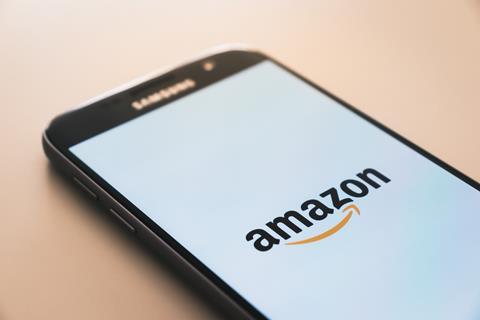
How Amazon moved the goalposts
Google may have been the first platform to force brands to consider SEO and search within online marketing strategies, but Amazon is taking that challenge to new heights.
In the US, more online searches now start life on the e-commerce giant than on Google, with the UK not far behind, and so any brand selling on the platform (or considering doing so) needs to get to grips with its unique processes to market effectively. The failure of larger, less agile fmcg brands to do so is one of the reasons that small names have grabbed market share in certain categories, says Tom Cijiffers. Often “they can work the rankings and Amazon algorithms better than big companies”.
The Amazon paid media product, or what appear as sponsored posts, are “becoming more sophisticated”, he adds. “The way it’s calculated nobody quite knows but historic sales are an important part. That’s a marketing responsibility. It requires different interactions from different parts of the organisations, which can be difficult for large legacy brands to manage.”
Even aside from securing a spot at the top of the Amazon search result, any brand selling via the online retailer needs to craft their own promotion and presence in a way that has never been required before by third party retailers. “You have to sponsor a product, have a brand page and be featured,” says Ruben Schreurs. “Brands are starting to wake up to the implications of this.” It isn’t an approach without controversy. “Amazon are now saying, ‘we won’t advertise for you, you’ll pay for the advertising of your product on our platform’ and that’s raising some eyebrows. Brands are looking at whether it’s fair to pay for this exposure.”
Added to that are the subtle ways in which the platform is pushing its growing range of private label alternatives. These appear as “recommended alternatives on the product pages of brands we’re talking about,” adds Schreurs. “It’s an interesting dynamic where brands are paying to be featured, and then Amazon uses that exposure to offer low-cost alternatives.”
As Amazon encroaches ever more into grocery, marketing teams will need to get to grips with this dynamic - and fast.
How digitally mature are fmcg brands in 2019?
Click the table below for the top 100 ranking
To measure the digital maturity of brands, Kagool used the 100 leading fmcg brands compiled in The Grocer/Nielsen Biggest Brands Survey 2018. It measured key metrics in 11 core aspects of these organisations’ digital marketing activity and were able to calculate an overall digital maturity score (%). For further details about the research methodology, please see https://info.bekagool.com/fmcg or get in touch at info@bekagool.com or @bekagool on Twitter.










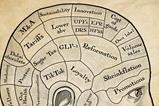
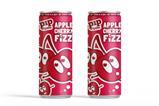
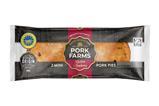

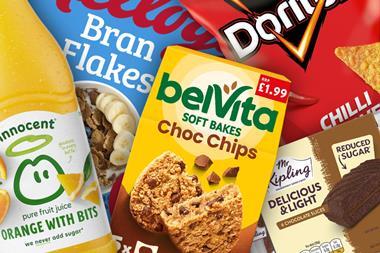










No comments yet